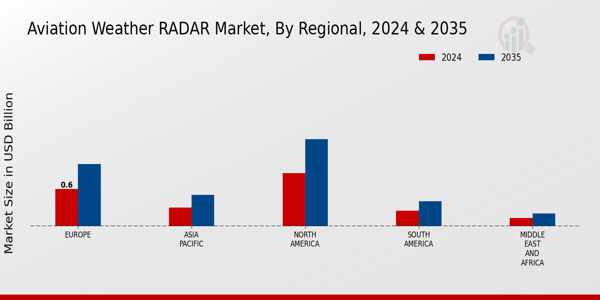The Aviation Weather Radar Market reflects an essential segment of the aviation industry that focuses on providing accurate weather data critical for operational safety and efficiency. This market is characterized by a growing demand for advanced weather monitoring solutions that enhance situational awareness for airlines, air traffic control, and airport operations.
The competitive landscape showcases a blend of established players and innovative entrants, all striving to differentiate their offerings through technological advancements and strategic partnerships.
The increasing need for improved decision-making processes in aviation operations amid unpredictable weather patterns underlines the relevance of reliable weather RADAR systems.
As the market evolves, competitors are also expanding their geographical reach, emphasizing the importance of localized weather information in this globalized sector, thereby intensifying the competitive dynamics.
Spire Global has established a prominent presence in the Aviation Weather Radar Market by leveraging its expertise in satellite-based weather data collection and analytics. The company has become recognized for providing real-time global weather information that enhances predictive capabilities for aviation operations.
Spire Global's strengths lie in its advanced satellite technology, which enables the collection of weather data from remote and underserved regions, thereby offering unique insights that traditional ground-based systems may lack.
By focusing on innovations in data analytics and machine learning, Spire Global helps its clients make more informed decisions regarding flight schedules and route planning, ultimately enhancing safety and operational efficiency in aviation. Their ongoing efforts to improve data accuracy and latency further solidify their competitive position in the market.MeteoGroup is another key player in the Aviation Weather Radar Market, known for its comprehensive suite of weather information services tailored specifically for the aviation sector.
With a diverse range of products including predictive weather models and real-time METAR and TAF data, MeteoGroup is committed to providing solutions that enhance operational safety and efficiency for airlines and airports worldwide.
The company's strengths are rooted in its robust meteorological expertise and strong focus on customer service, allowing it to forge meaningful relationships with stakeholders in the aviation industry.
Additionally, MeteoGroup has pursued strategic mergers and acquisitions that have expanded its technological capabilities and market reach, positioning it as a leading provider of weather intelligence. The company's continuous efforts to innovate and adapt to market needs contribute to its sustained success and relevance within the global aviation weather RADAR landscape.



















